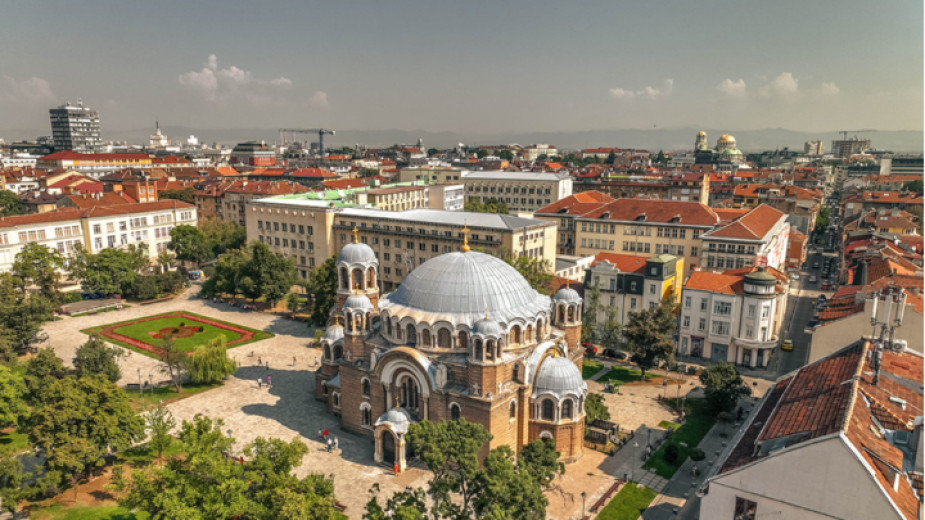 7
7
Being a city with a history spanning more than 8,000 years, Sofia has its secrets, even for the people whose families have lived there for generations. “In Sofia, time passes according to its own rules, and to capture the city in a photograph, you need to know it,” says photographer Ivan Shishiev who is the author of a new tasteful album “Sketches of Sofia: 24 hours in the city”.
Radio Bulgaria talked to him about the beauty of the city, hidden in the smallest of details in our everyday lives, beauty we often take for granted. If we imagine Sofia to be a woman, with a beautiful but also with an ugly face, that could help us get to the quintessence of the city:
“The beautiful face of Sofia is Mount Vitosha because it has hardly changed. What makes the city exceptional is that it is so green. Every time, I think to myself that Sofia is green-eyed, with a Roman nose, brown hair, with a measure of Balkan beauty,” Ivan Shishiev said in an interview with radio Bulgaria. “Her ugly side are the bleak neighbourhoods – they are part of the city and we can’t avoid them, but if they are fixed up they could turn into something stylish. Sofia can take some cities in Europe, in the Balkans even, as a model, where municipalities help diligent owners keep the buildings they are living in in good repair and fine the ones who do not. We all live in this city, and we can’t blame anyone else if the façade of your building is in disrepair, if the entryway is dirty.”
And though he tries to show and to talk about the beautiful sides of the capital city, Ivan is also familiar with its unattractive side, and with its multitude problems which are not going to go away with the wave of a magic wand:
“Somewhere in the book I wrote that Sofia is a city of unfulfilled buildings and fulfilled repairs. But that is true of the city 70-80 years ago when the city was trampled on, in our day the improvement, compared to times past, is there to be seen. I’ll give as an example Women’s Market. If we go back to the 1920s, we’ll see it was a trading centre. And all of a sudden, the farmers who came here to sell their wares decided to buy a spot to put up a building on, to sell their products but also to live. After 1944 (the communist coup d’état in Bulgaria – editorial note) people came and started renting rooms for a short space of time. And the fact they didn’t spend long there meant they didn’t repair the apartment and the building, they didn’t see the point. And so, over the next 50 years, time left its very visible mark on this area. At the moment, however, there are many people renting apartments there, but they now want to change the environment they are living in. We are so suspicious if a foreigner comes to live here, especially from the East, but so many of them have mended so many things we hadn’t kept in good repair for 80 years.”
Besides the superb photographs, some of which taken specifically for the album, “Sketches of Sofia: 24 hours in the city” has a foreword written by the Bulgarian writer who won the international Booker prize – Georgi Gospodinov:
“I’ve known Georgi for some years, and we’d been talking about this foreword long before the Booker prize,” Ivan says. “It is quite a short preface, and very specific. He talks about his time shelters and time spaces in the city, and presents Sofia as a place full of many elements, small details and small stories that make the city what it is.”
Translated and posted by Milena Daynova
Photos courtesy of Ivan Shishiev
Three-time world champion and Olympic weightlifter Carlos Nasar will be holding a special event with the Bulgarian community in London on 23 November. According to the organisers, it will be an open conversation in which Nasar will discuss his journey..
On 16 November, we celebrate Caritas Day, when we honour the Catholic Church’s charity organisation that brings hope to those in need through care and acts of mercy . It reminds us that financial gain is not what matters most. What truly matters is..
The first museum of investment gold is welcoming visitors in Plovdiv who want to learn more about the history of money and its connection to gold – from the birth of gold, its cosmic origin, and its journey to Earth, to how this precious metal has..

+359 2 9336 661
